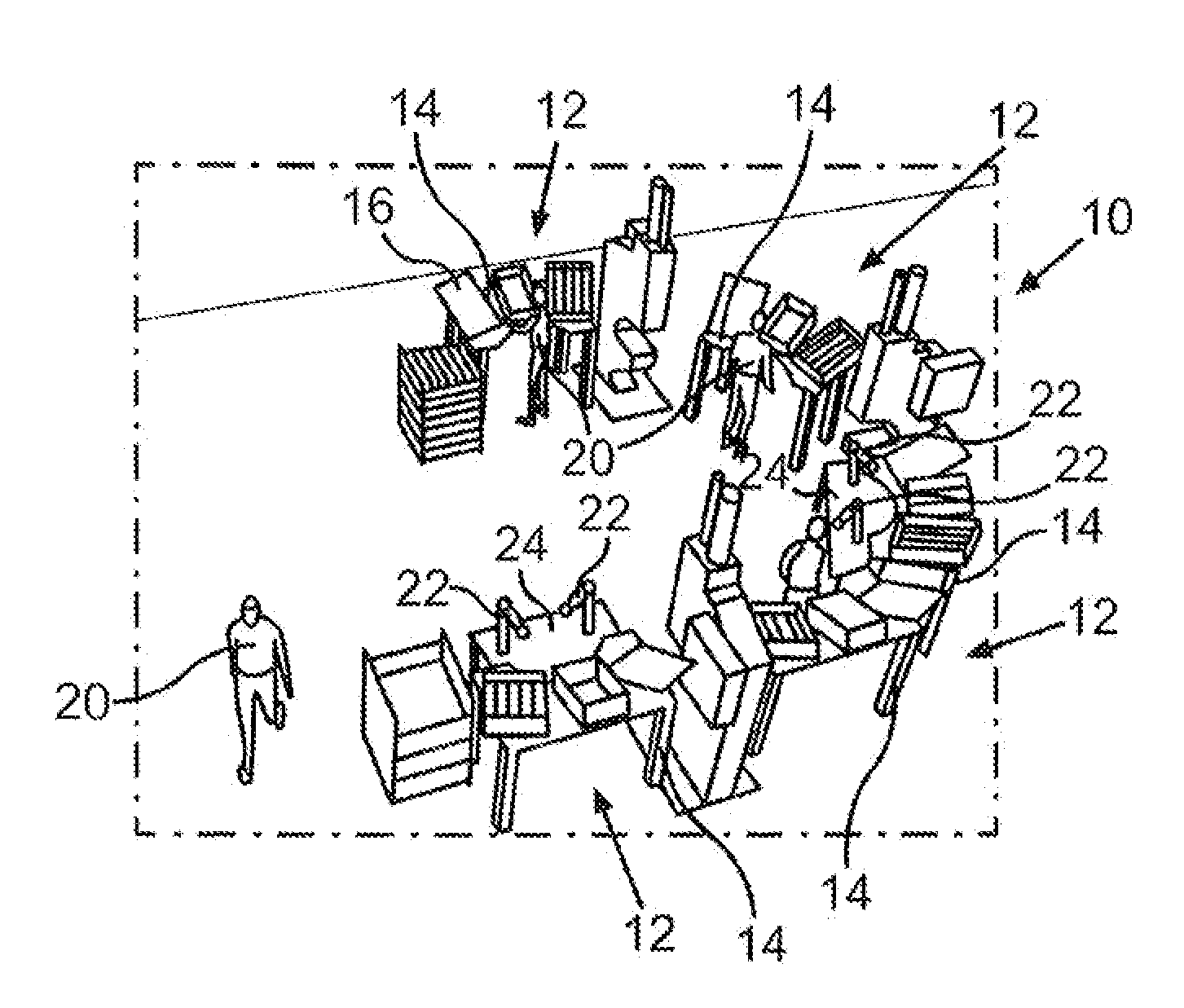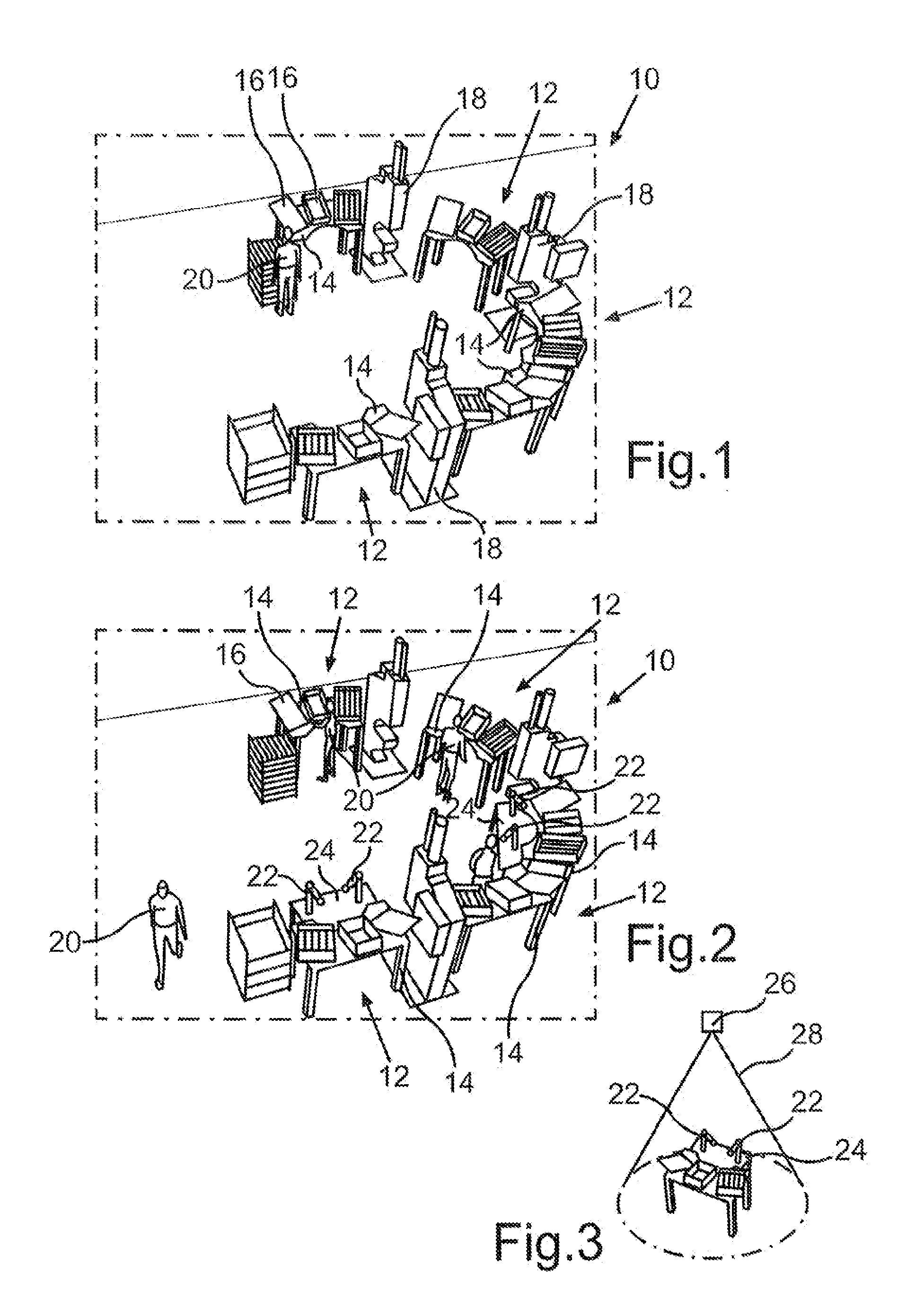Method for Operating a Production Plant
a production plant and operation method technology, applied in the direction of electric programme control, program control, instruments, etc., can solve the problems of fixed cycle time of the plant, inability to flexible reconfiguration of the production plant, and inability to stop the entire plant, so as to reduce the space requirement of the robots in the production plant, increase flexibility of their arrangement, and eliminate capacity or resources. , the effect of no capacity or resources wasted
- Summary
- Abstract
- Description
- Claims
- Application Information
AI Technical Summary
Benefits of technology
Problems solved by technology
Method used
Image
Examples
Embodiment Construction
[0020]A production plant, identified as a whole by 10, which here is designed to manufacture motor vehicle gears, comprises a plurality of work stations 12, which in turn comprise work surfaces 14 and storage containers 16, which are not all identified here for the sake of clarity. Additionally, machine tools, for example presses 18, are allocated to the work stations 12.
[0021]In order to be able to operate the production plant 10 optimally in the case of varying loads, a control device is provided that is not depicted in the figures. This receives information about the number of pieces to be produced or number variants of the manufactured products to be produced and subsequently generates instructions for the occupancy of the work stations 12 from this information.
[0022]In the situation depicted in FIG. 1, the production plant 10 only has a small load. This situation can, for example, occur in the case of the production of small batches or start-up batch production. The production ...
PUM
 Login to View More
Login to View More Abstract
Description
Claims
Application Information
 Login to View More
Login to View More - R&D
- Intellectual Property
- Life Sciences
- Materials
- Tech Scout
- Unparalleled Data Quality
- Higher Quality Content
- 60% Fewer Hallucinations
Browse by: Latest US Patents, China's latest patents, Technical Efficacy Thesaurus, Application Domain, Technology Topic, Popular Technical Reports.
© 2025 PatSnap. All rights reserved.Legal|Privacy policy|Modern Slavery Act Transparency Statement|Sitemap|About US| Contact US: help@patsnap.com


